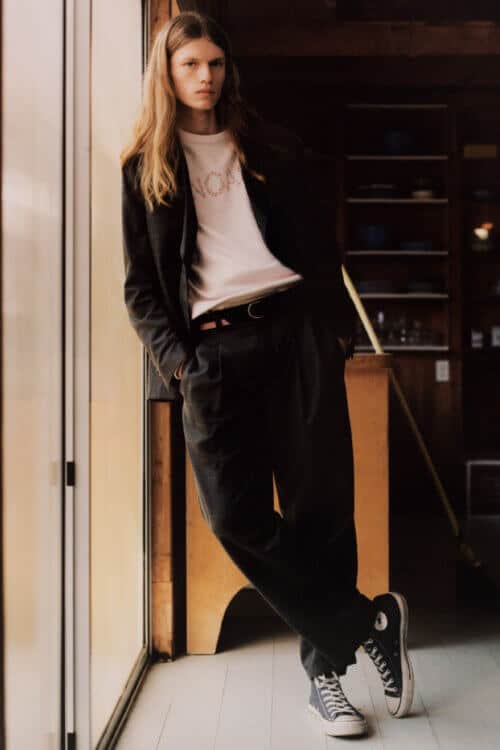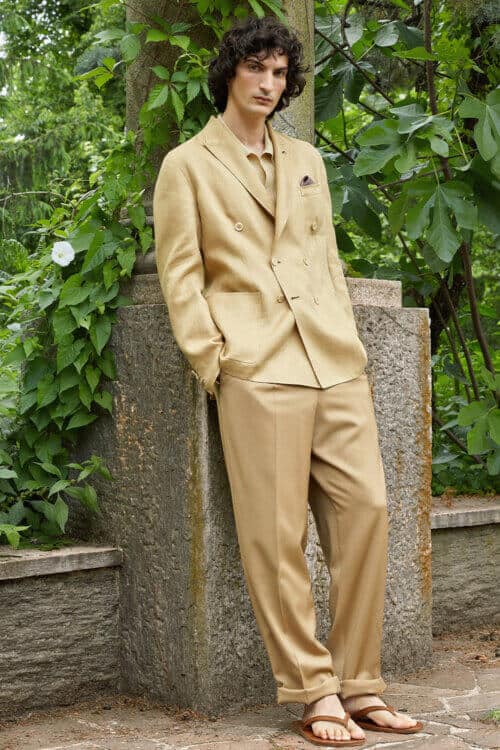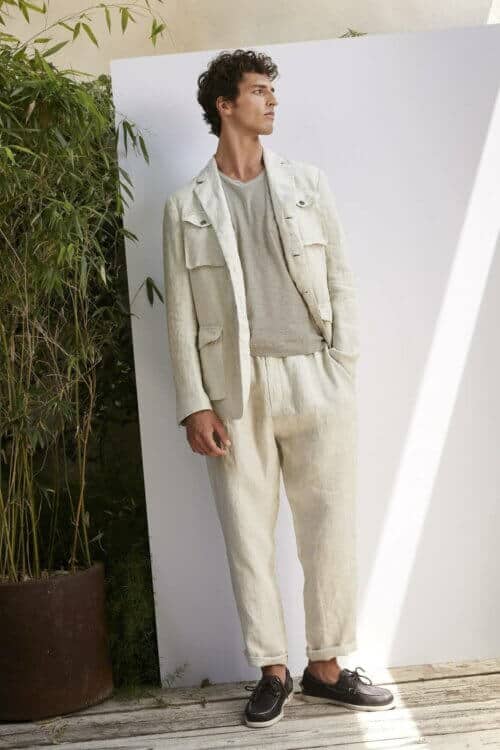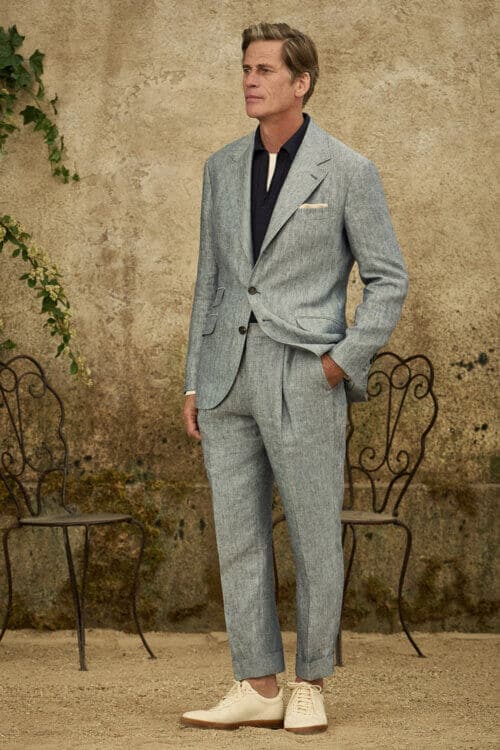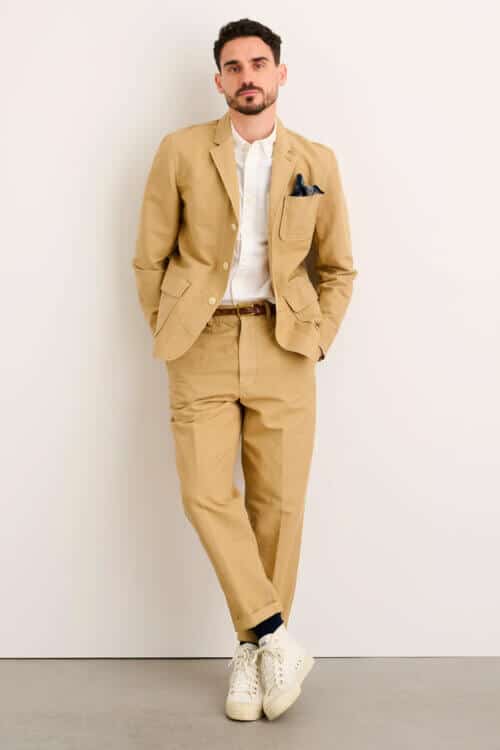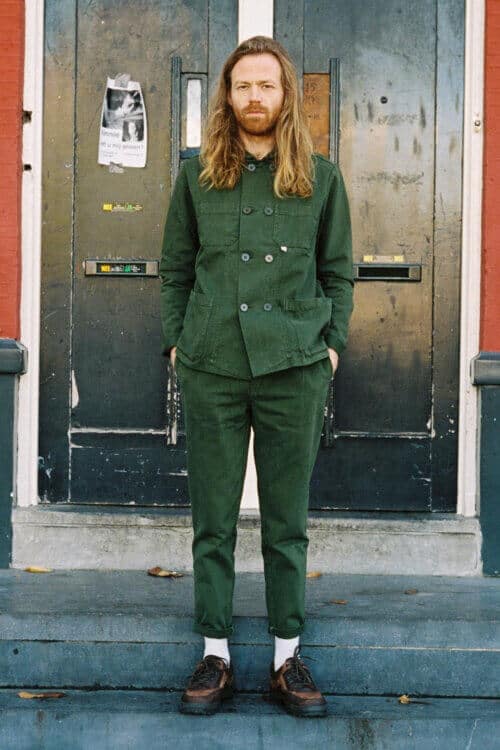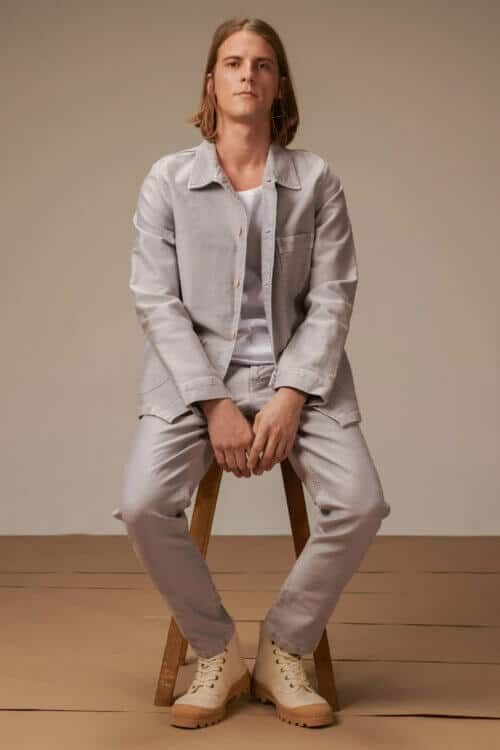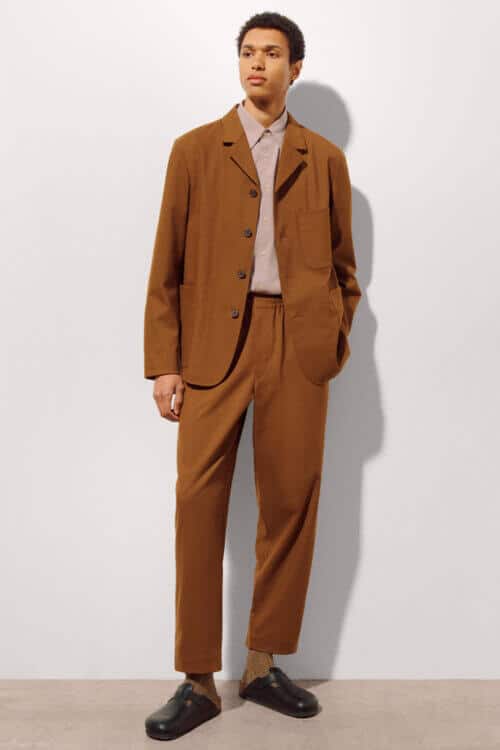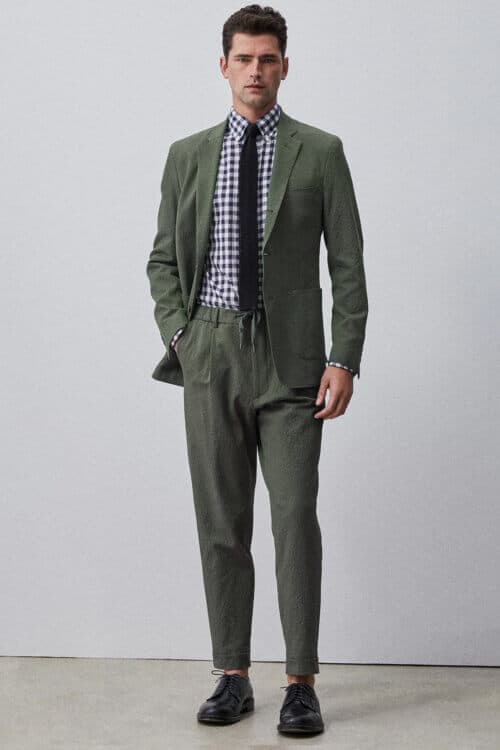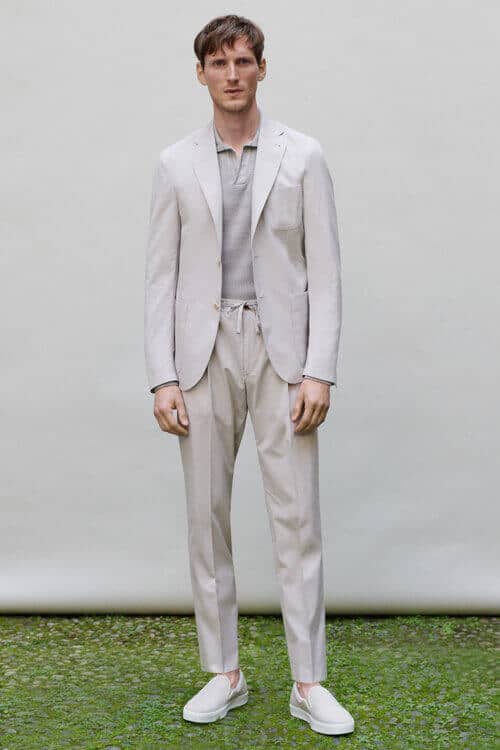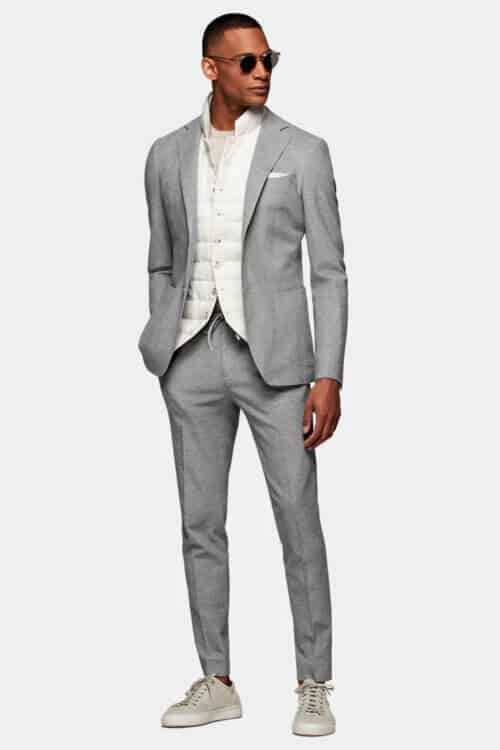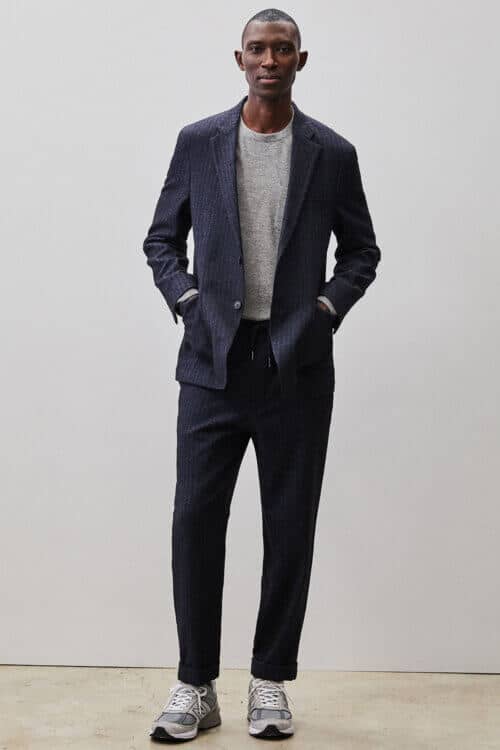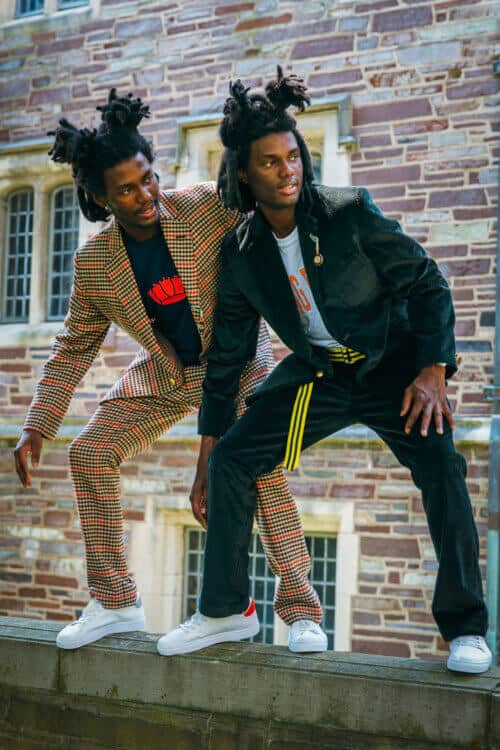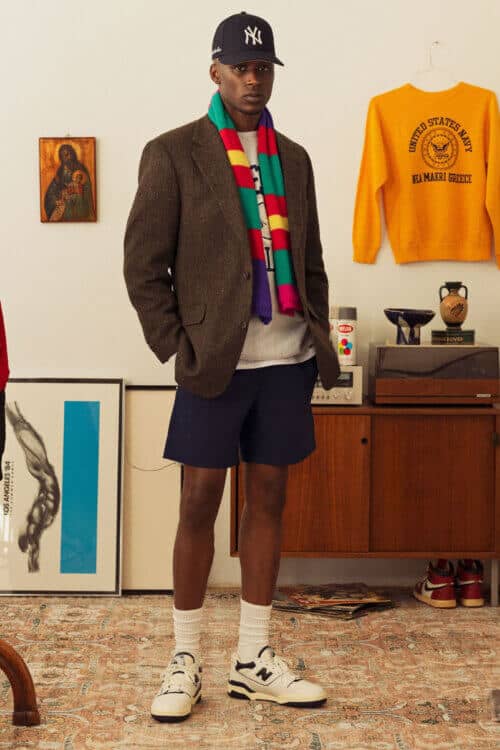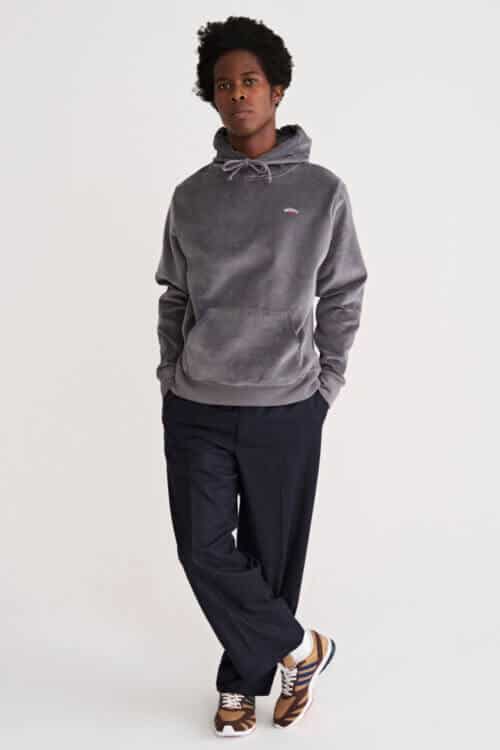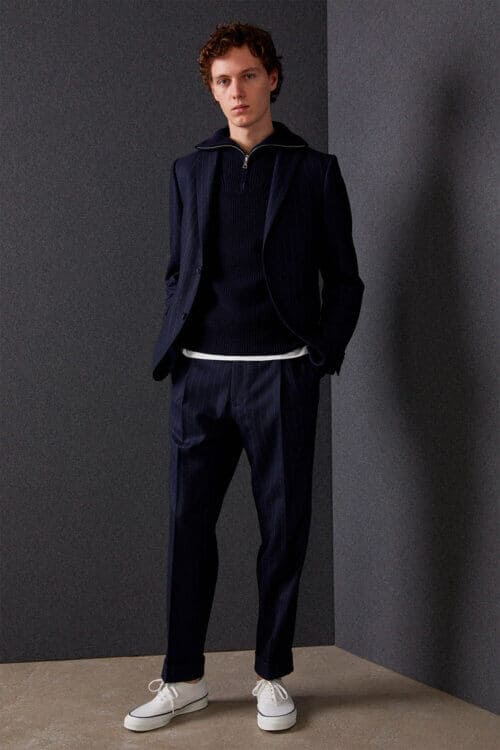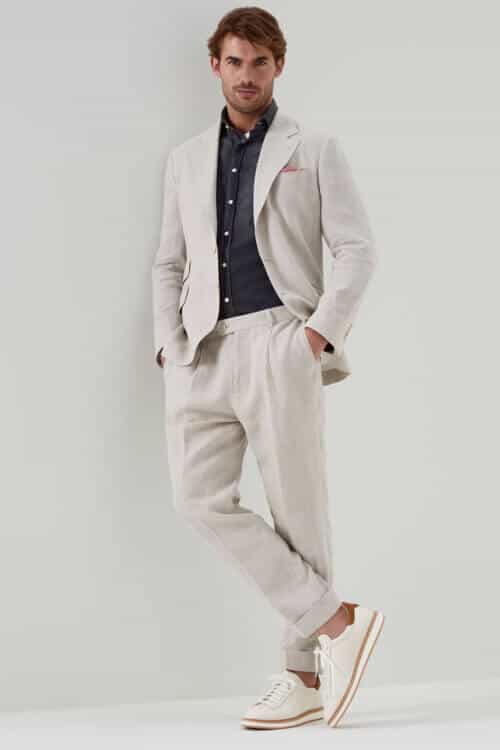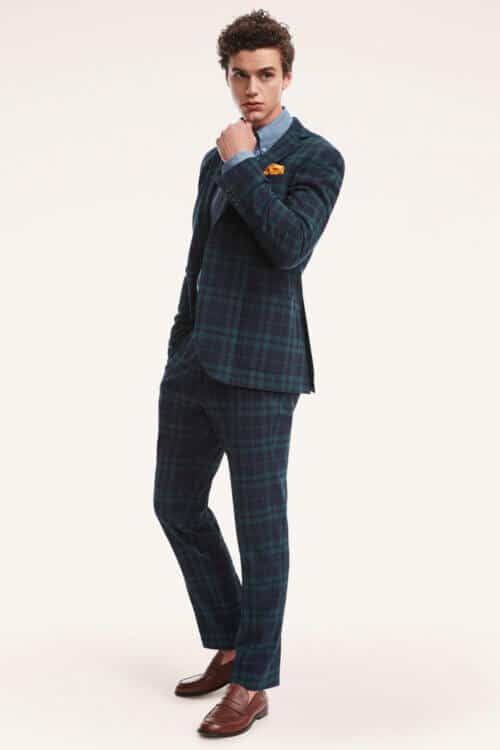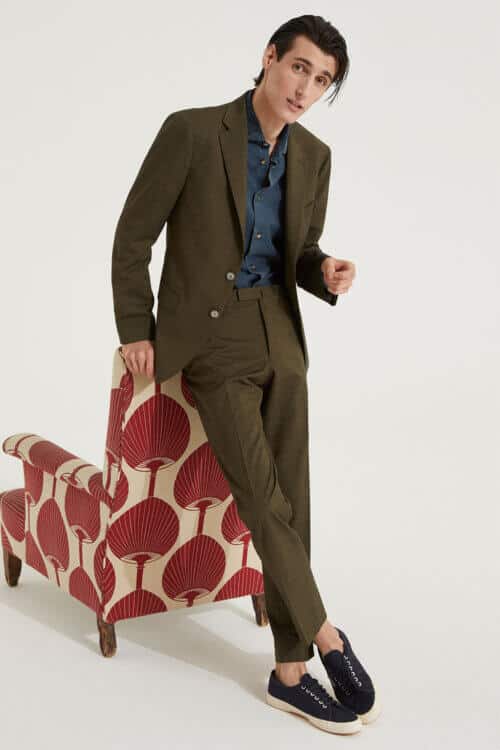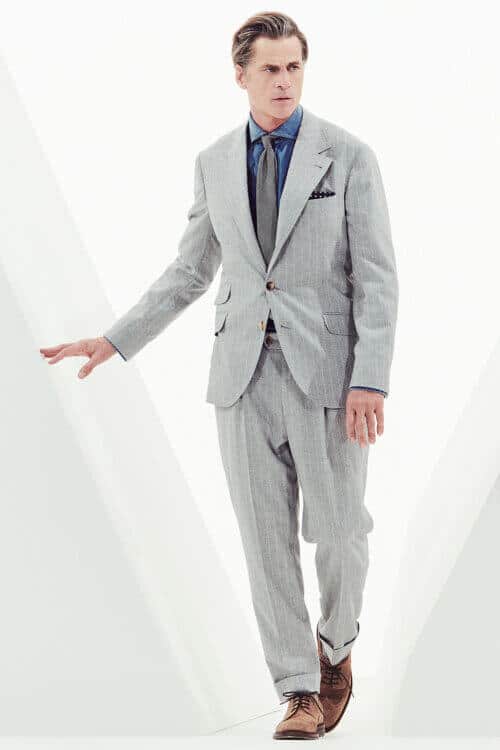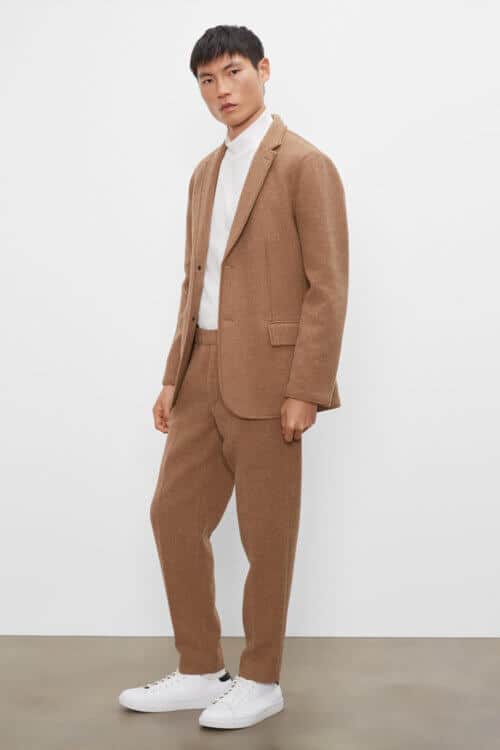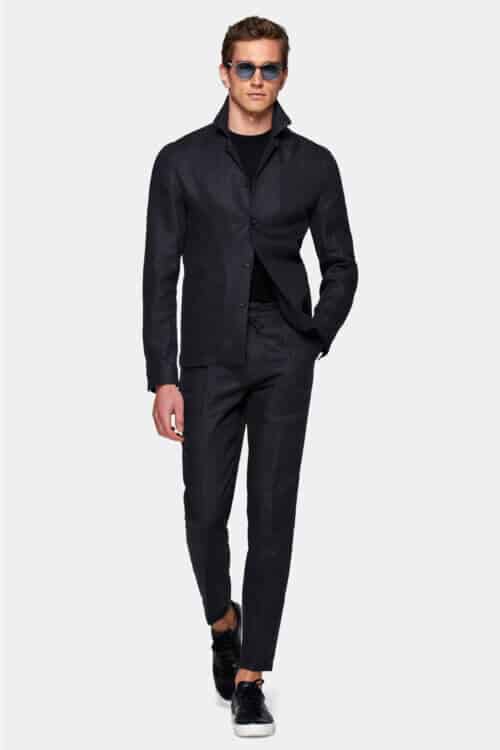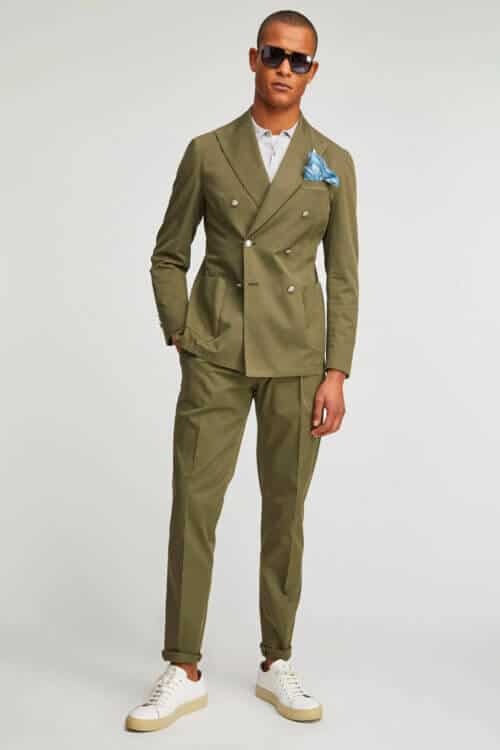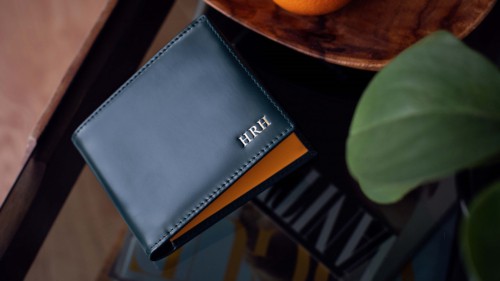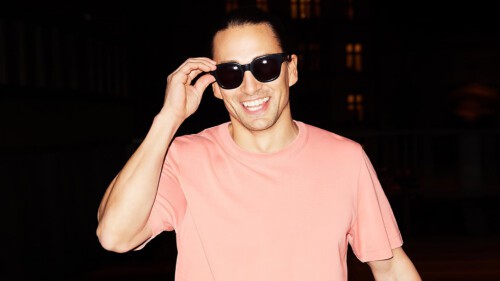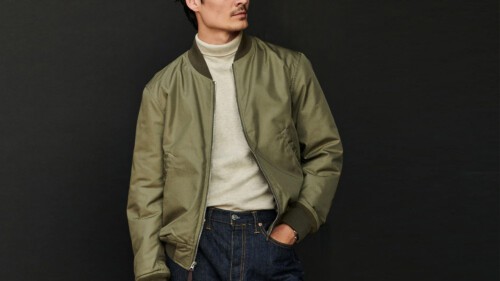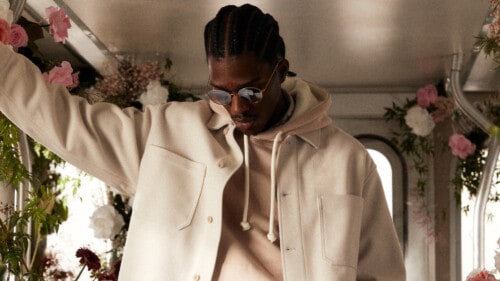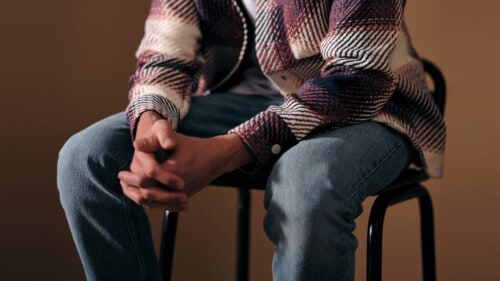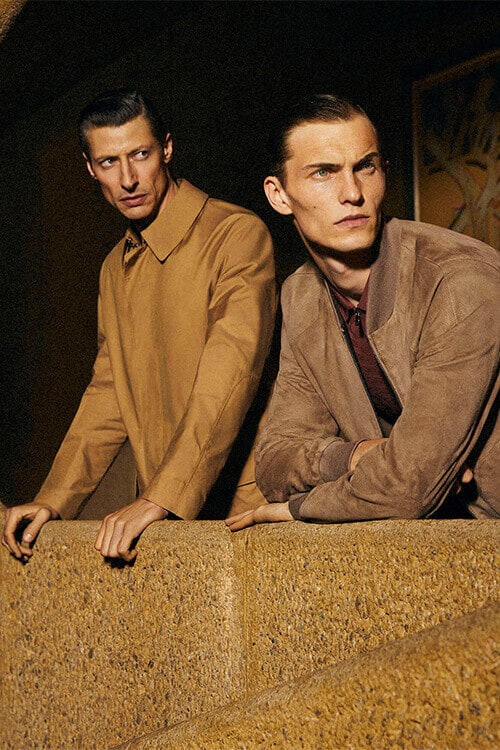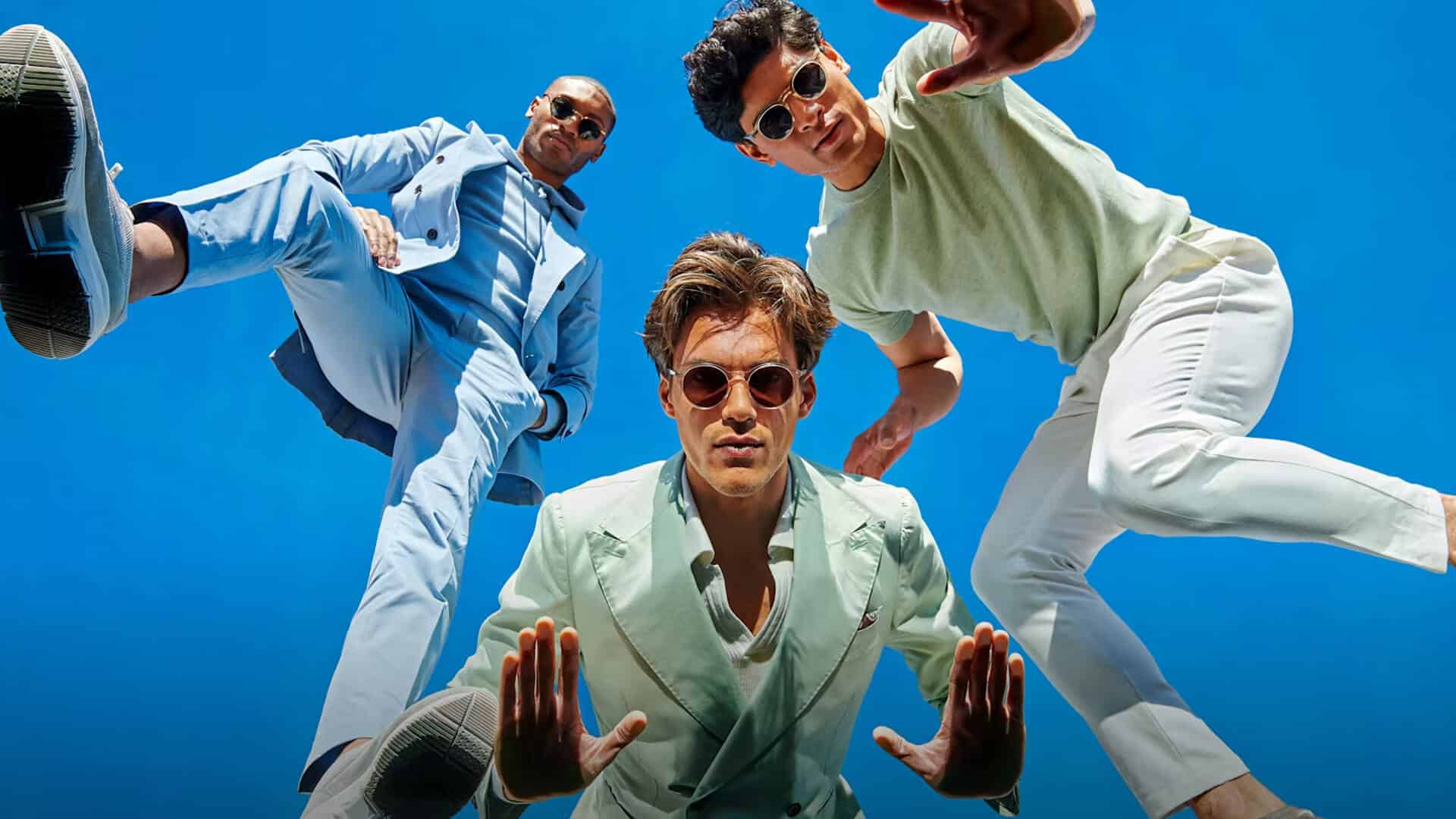
The Key Men’s Suit & Tailoring Trends For 2024
From suits and sneakers to wearing blazers with sportswear, these are this year's key tailoring movements.
You’d be forgiven for thinking tailoring is unaffected by trends. And for the most part you’d be right. The suit as we know it today hasn’t changed a great deal since men first wore it in the 1860s and 70s. Throughout the 20th century it was the default choice for western men from a wide variety of social standings. Tailoring trends, such as they were, didn’t alter the fundamentals.
The suit fluctuated in fit across the decades, and certain fabrics proved more popular than others, but the basic premise of a matching jacket and trousers, contrasting shirt and some form of necktie has always been there.
Over the last few years, however, the suit has undergone something of a transformation, and one that only accelerated during the pandemic. Gone are the days of tailoring as uniform. Corporations all over the world have relaxed their dress codes, meaning you’re more likely to find a banker or stockbroker in a pair of chinos and a polo shirt than a three-piece pinstripe suit.
The suit is a choice rather than a requirement now, meaning there’s more room for creativity. So from suits and sneakers to wearing blazers with sportswear, these are 2024’s biggest suit trends.
Oversized tailoring
Oversized tailoring isn’t strictly a new thing. In what might have been one of the first tailoring trends in existence, it came to prominence in the 1980s, when designers like Giorgio Armani introduced billowy double-breasted suits with multi-pleated trousers that themselves referenced the elegance of 1950s tailoring. But where Armani’s large suits were worn fairly traditionally, with collared shirts and ties, today’s oversized tailoring is an altogether different beast.
This tailoring trend takes inspiration from streetwear rather than office wear, seeing the suit worn in ways we might never have pictured 20 years ago. Designers from high street to high end have co-opted the suit, recutting it in laid-back fits and combining it with T-shirts, hoodies, sneakers or sandals.
There’s a relaxed elegance to this look that’s part Japanese minimalism and part 90s grunge, giving it an attitude that belies tailoring’s formerly stuffy connotations. When trying it yourself it’s best to keep things simple and let the fit do most of the talking. Opt for a navy or black oversized suit and combine it with a white or grey T-shirt and white canvas sneakers, both of which will help emphasise the dressed down nature of the suit itself.
Workwear-inspired suits
The idea of a workwear suit is a bit of an oxymoron. Workwear is traditionally used for manual jobs like carpentry and factory work that requires functional clothing that will last, hold your tools and not get in the way. Suits on the other hand have always presented an idea of professionalism within an office or business environment, where one would mostly sit at a desk all day.
A workwear suit then doesn’t make much sense on the face of it, but in practice all is clear. Taking the best of both worlds, this hybrid get-up is semi-smart with its blazer-style jacket and matching trousers, but practical details ensure it’s as functional as it is suave.
Often crafted from hardy cotton twill or moleskin, this casual take on the suit is incredibly easy to wear. The blazer usually features large patch pockets on the front, while its unstructured silhouette ensures it feels more like a chore jacket than a traditional blazer. The trousers can come in many forms, but we’re drawn to carpenter pants, which feature subtle side pockets at the thigh and a handy hammer loop, which is ideal for clipping your house keys onto.
You’re unlikely to wear it to a royal wedding, but this style of suit can work surprisingly well when smartened up with a shirt and tie – but it’s easiest to wear when dressed down with tees and sneakers. In fact, if you’re looking to wear a suit with sneakers, this might be the tailoring trend for you.
Drawstring trousers
If it sounds like a cheat, it’s because it absolutely is – but we wouldn’t call it sacrilege. Drawstring trousers won’t transform the way you wear a suit, but they will transform how it feels. It cannot be overstated how much the simple change from a fixed waistband to an elasticated one can change your pant’s comfort levels.
Drawstring suit trousers work in the same way a pair of sweatpants does, in the sense they move with you as you walk or sit down. The waist expands rather than cuts in, and allows you to wear them slightly higher or lower depending on your preference and body shape. In short, if you value comfort as much as you do style, you’ll want to consider them when you make your next tailoring investment.
The best thing about tailored drawstring trousers is that they look like regular trousers. If you’re wearing them with a T-shirt or a tucked-in shirt, it’s difficult for anyone to see the waistband, meaning on the outside at least, they look like standard formalwear, but without the annoying, inflexible waistband. They’re also widely available in a choice of fabrics, including cotton twill, corduroy, wool herringbone and tencel.
It shouldn’t have taken 150 years for truly comfortable tailoring, gentlemen, but it’s here now.
Tailored sportswear and sporty tailoring
Athleisure was never easy to pull off. Combining tailoring with sweatpants and running shoes never quite felt right. But now a new way of wearing tailoring has emerged and it’s arguably the easiest way to combine it with sportswear.
The sportswear in question though is more retro and less techy – think loopback sweatshirts, colourful dad caps and retro sports socks replete with multicoloured stripes. There are still a lot of pitfalls in this area, and it’s all too possible to look as though you’ve trawled through a lost property cupboard and thrown a blazer on top. But when it’s done well, there are few more stylish ways to wear tailoring today.
The trick is to utilise complementary colours. If you’re wearing a brown houndstooth blazer, ensure there’s a little brown elsewhere in the look, whether in the cap, T-shirt or shoes (preferably suede or leather boat shoes).
Also take note of the fit and aim for garments on the relaxed end of the spectrum. A boxy, unstructured double-breasted blazer will be more at home with a hoodie than a slim fit jacket will, and wider-legged trousers will better suit a sweatshirt.
Tailoring with denim shirts
Tailoring and denim go together surprisingly well. The classic, durable workwear fabric is more widely associated with casual dress, but combine it with a suit and the result is often pleasing. That’s especially true when the suit boasts plenty of its own texture, to counter that from the indigo yarn.
Tweed and herringbone blazers, for example, pair exceptionally well with jeans, while houndstooth jackets combine excellently with denim and chambray shirts. The two provide an interesting take on high/low dressing, with the denim bringing the tailoring down a peg or two and keeping it from looking too stuffy or formal.
For your own take on combining a suit with denim, try a classic, unstructured navy two-piece, and replace your regular Oxford shirt with a denim one. Tuck it in and finish off with suede loafers and you’ve got a stylish, versatile, contemporary take on tailoring that’s suitable for a wide variety of events.
Suits and sneakers
It’s either the ultimate way of dressing down a suit or a scruffy mistake, depending on your point of view, but there’s no denying the appeal of wearing suits with sneakers. It’s still a polarising look, even though we’ve been doing it for at least a decade.
The defence case is simple: who doesn’t want the comfort of kicks with the transformative nature of good tailoring? Unfortunately, this is a combination that’s incredibly easy to get wrong, and one that often looks like an afterthought, or like you forgot your proper shoes. The trick is to go for a suit that is as casual as possible.
A workwear-inspired take would be ideal, but at the bare minimum you want an unstructured cut, a more relaxed fabric like cotton twill, and less formal detailing like patch pockets and notch lapels. The fit also needs to be on point. Something not too slim and not too relaxed is ideal, while the trousers need to be hemmed slightly short so they finish just above the sneakers, leaving a clean, unbroken trouser line.
Keep the accessories to a minimum and you’ve got a tailoring trend that’s the epitome of smart casual dressing, perfect for wedding receptions, dinners out, drinks at a cocktail bar and more.
